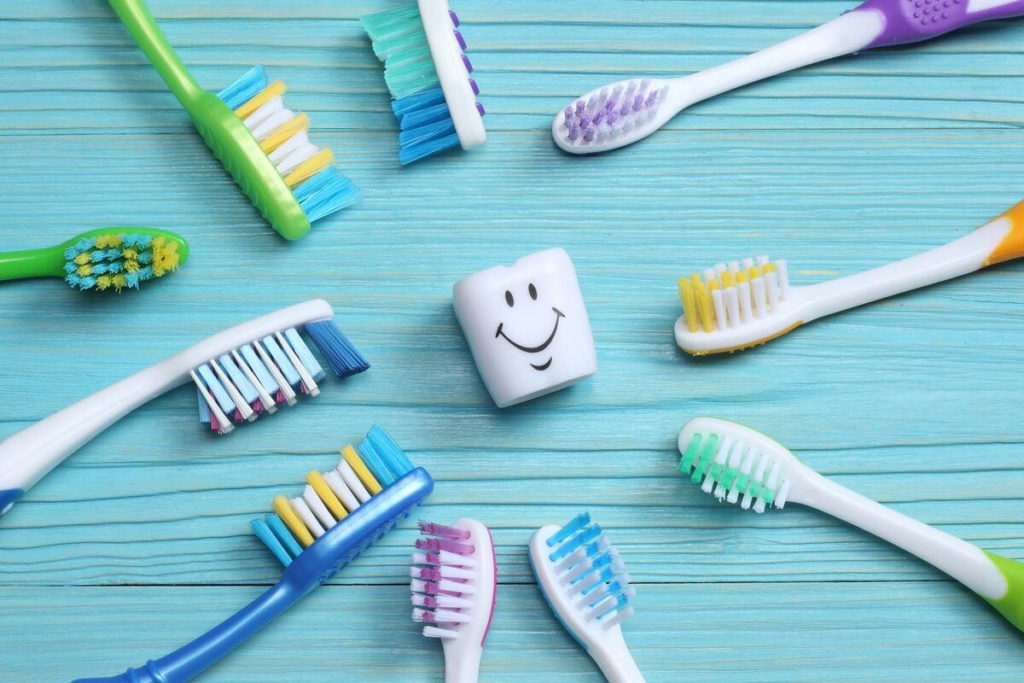
Toothbrush. Every morning starts with it. Moreover, human health begins with it, since the work of the organism as a whole depends on the state of the oral cavity. Obviously, such an important hygiene item must meet the highest requirements: to provide optimal cleaning not only of the teeth, but of the entire oral cavity, in no case injure or injure the delicate mucous membranes, and to simplify the care of hard-to-reach corners. To do this, you need to carefully approach the choice of a toothbrush. Let’s figure it out: what brushes are, what materials they are made of, what care and storage they require, and how often they need to be replaced.
Kinds and types of toothbrushes
Since the oral cavity is the gateway to the body, this place must be carefully protected from the invasion of bacteria. This is exactly what a toothbrush does. Today, manufacturers offer a huge selection of this hygiene product, and you should be guided by the types and types of brushes.
- The first thing to look at is the stiffness of the toothbrush bristles. It depends on the diameter of the bristle fiber. The larger it is, the harder the brush will be. There are brushes:
- with very hard bristles, designed for people prone to the formation of tartar. They are better than others to cope with this problem, however, such brushes should be used periodically and with care so as not to damage tooth enamel and gums.
- with hard bristles. They, like brushes with very hard bristles, are more suitable for fixing problems that have arisen than for permanent use.
- with bristles of medium hardness. This is the most commonly used and most effective type of brush. Their bristles well clean the entire oral cavity from food debris, plaque and easily penetrate into the spaces between the teeth.
- with soft bristles. These brushes are designed for children and people with very sensitive oral surfaces.
- with very soft bristles. This is the least effective type of brush and is intended only for people with problems and diseases in the oral cavity that require minimal intervention.
2. The second important indicator is the material from which the toothbrush bristles are made. There are brushes:
- with natural bristles
- with artificial bristles
So-called “natural” brushes made from hog bristles are too soft compared to artificial fiber brushes, and they actively absorb and retain moisture, which leads to the risk of spreading bacteria, making them unhygienic and even dangerous.
3. The third indicator is the type of the brush itself. There are:
- ordinary toothbrushes, the body of which is made of plastic or wood
- electric toothbrushes with replaceable heads and a timer
- ultrasonic toothbrushes, the use of which is prohibited for people with diseases that have
- contraindications to the effects of ultrasound
Storage and care
A few words must be said about the care and storage of toothbrushes.
Any dentist will say that following a few simple rules will reliably protect your teeth and the entire oral cavity from unpleasant consequences.
- The toothbrush should be stored in a separate glass to prevent the exchange of bacteria between family members.
- It is necessary to rinse the toothbrush well after each brushing, removing food and toothpaste residues from it.
- Put the brush in a glass with the bristles up so that it dries well before the next use and does not allow bacteria to multiply on its surface.
- You should change your toothbrush strictly once every 3 months.
- Extraordinary replacements should be carried out in two cases: after a viral infection, after a visible deformation of the bristles.
The toothbrush is perhaps the most important item of human hygiene. It can provide reliable protection against many diseases and become the key to health for many years. An improperly selected toothbrush, improper care and untimely replacement of it can seriously harm. Compliance with these simple rules will allow you to reliably protect yourself from the unpleasant consequences of oral diseases. Be healthy!
